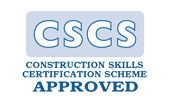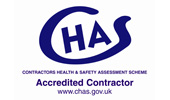Testing The Screed: BRE Drop Hammer Test
Testing The Screed: BRE Drop Hammer Test
I’m Andy Parkin, Managing Director at Speed Screed, a Multiple Award-Winning screed solution provider. Today I am here to talk about BRE drop hammer test or Screed test as it is also known.
Screed use is a common construction practice, it is important to test the strength and soundness of screed.
BRE drop hammer test is such a test. It was developed by the Building Research Station in the 1970’. It’s still considered one of the best screed test methods for measuring the In-Situ crushing resistance for various types of screeds.
What is the Soundness of Screed?
The soundness of screed is defined by the ability to withstand loads and traffic in any service area without crushing. The BRE drop hammer test is a certified method according to the British Standard BS 8204-1:2003 Annex D and E.
Multiple factors go into determining the soundness of screed. The quality and characteristics of the screed change differently for each of these parameters. They are:
- The level of compaction
- The aggregate grading
- Water content in the screed
- The binder contents
- Curing
The BRE drop hammer test has two main variations that cover all types of the screed. For bonded and unbonded screed, the test described in Annex D of the British Standard BS8204-1:2003 is followed. And for floating screed, the Annex E method is followed.
BRE Drop Hammer Test
While the main concept of the test is similar across the board, there are a few differences that are influenced by the type of the screed.
For Bonded and Unbonded Screed
The test is performed by dropping the hammer down onto the screed and measuring the indentation afterward. It’s a fairly simple test. A cylindrical glide rod is used to drop a 4 kg annular object onto an anvil which is placed on the screed. The screed is hit 4 times and then the indentation is measured.
While performing the test, there are some criteria to be followed. These are general guidelines for testing and sampling the screed . They are:
- The age of the screed (at least 14 days)
- A minimum of 3 tests for every 20 square meters of area
- Random spots should be selected for testing purposes while focusing on heavy traffic areas
- Don’t perform tests within 300mm of the cracks, joints, or edges
For Floating Screeds
The test method is quite similar to the previous one. But if your floating screed is laid on insulation, the regular BRE drop hammer test can punch through the insulation. The modified version of this screed test is described in Annex E of the BS 8204-1:2003. A lighter weight is used for domestic floating screed.
The Results
Now, it’s time to interpret the results. A fracture on the screen can be identified with the change in the sound note when the weight hits the anvil. A dull thud and increase in indentation indicate that the screed has been fractured.
A truncated cone is not a good sign for the screed if happens within the first three blows. But if it only happens on the last the blow and the indentation is within the limits, the screed is considered satisfactory.
If you are still curious about the BRE drop hammer test, feel free to contact us.
Our Accreditations
About Speed Screed
Speed Screed Limited was founded on the key principle of providing first-class customer service. It has since built itself an impressive reputation for delivering high-quality projects across the United Kingdom.
The company’s success is built on its belief in quality work, attention to detail, on-time completion, strong working partnerships and the recruitment of top-level staff. about us >








